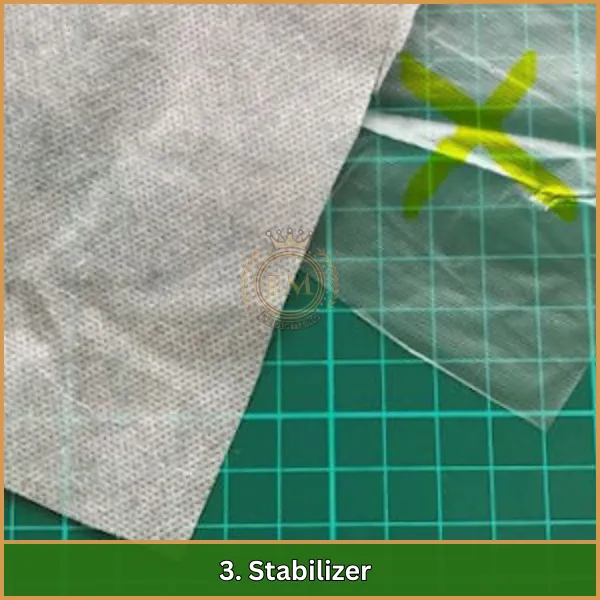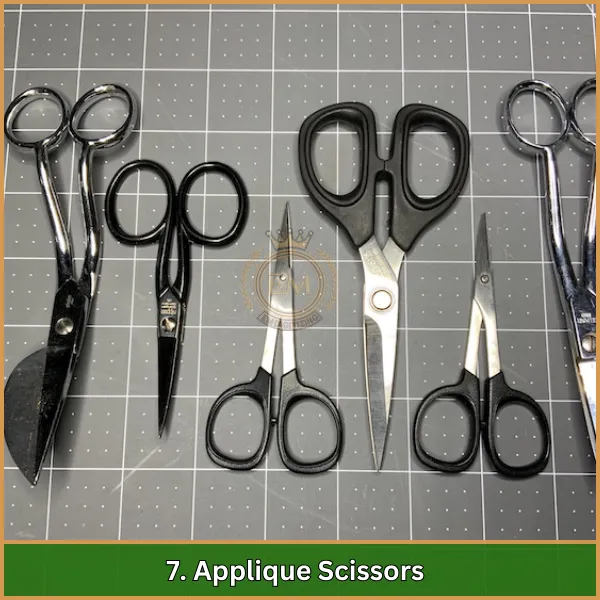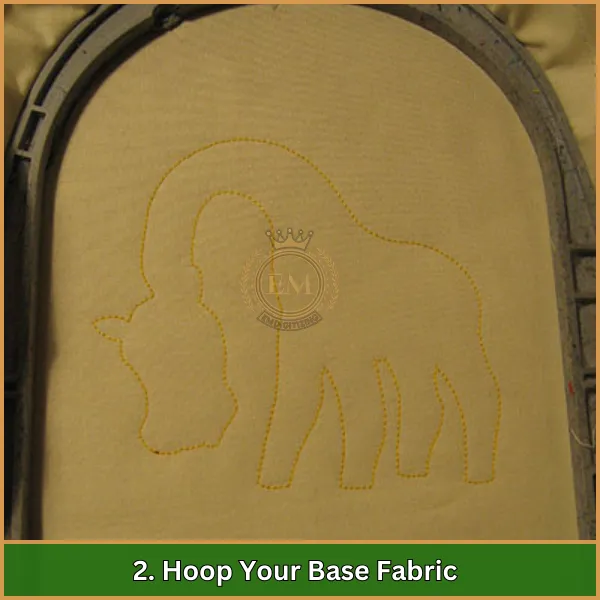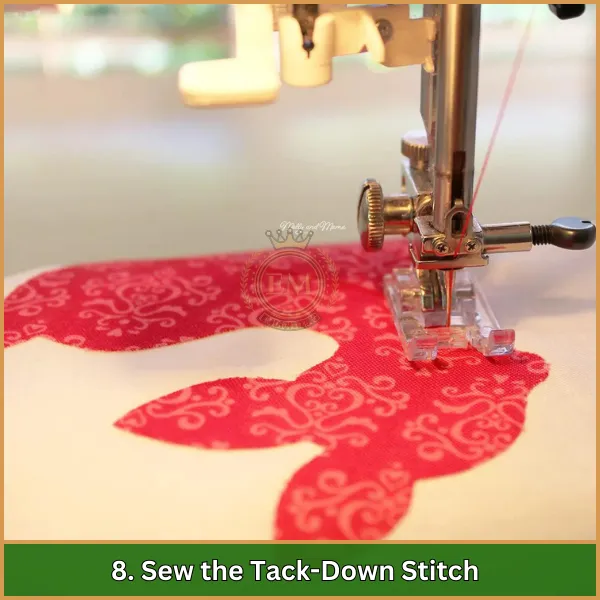La broderie double applique est une technique créative qui ajoute un look dynamique et superposé à vos créations.. En utilisant deux couches de tissu, vous pouvez introduire des contrastes et des textures audacieux qui donnent vie à vos projets.
Cette méthode améliore non seulement l'attrait visuel de votre travail, mais offre également des possibilités infinies de personnalisation..

Dans cet article, nous explorerons comment créer facilement de superbes motifs d'appliques en double broderie, donnant à vos projets une finition professionnelle et accrocheuse à chaque fois.
Comment créer de superbes motifs de broderie à double applique?
Qu'est-ce que la broderie double applique?
Appliqué conception de broderie est une façon amusante et créative d'ajouter des couches à vos créations. Il s'agit de placer deux morceaux de tissu sur votre tissu de base et de les coudre pour créer un motif décoratif..
Le résultat est un coloré, motif texturé qui se démarque. La double applique ajoute de la profondeur à vos projets et leur donne un aspect professionnel et unique.
Matériaux essentiels pour créer de la broderie avec des appliqués
Avoir les bons matériaux garantit que vos motifs de broderie à double applique ressortent parfaitement. Vous trouverez ci-dessous une liste du matériel essentiel dont vous aurez besoin:
- Tissu appliqué
- Tissu de base
- Stabilisateur
- Toile fusible
- Fil à broder
- Mini fer à repasser
- Ciseaux à appliques
Explorons chaque matériau et outil en détail pour comprendre leur importance et comment ils contribuent à créer de magnifiques appliques et broderies.:
1. Tissu appliqué

Pour créer le design en couches, vous aurez besoin de deux types de tissu appliqué.
Choisissez des tissus dont la couleur ou la texture contrastent avec votre tissu de base, comme le satin, soie, ou coton, pour faire ressortir les couches.
2. Tissu de base
Ce tissu constitue la base de votre conception d'applique. Il doit être suffisamment solide pour supporter les couches supplémentaires. Les tissus comme le coton ou le lin sont idéaux à cet effet, car ils conservent bien leur forme pendant la couture.
3. Stabilisateur

Les stabilisateurs fournissent un soutien à votre tissu pendant la couture, empêchant le regroupement ou la distorsion.
Les stabilisateurs détachables ou découpés sont couramment utilisés pour les projets d'appliques afin de garder tout lisse et sécurisé..
4. Toile fusible

La toile thermocollante agit comme un adhésif, maintenir temporairement vos pièces d'appliques en place avant de les coudre.
C'est un incontournable pour garantir un placement précis et réduire le déplacement du tissu pendant le processus de couture..
5. Fil à broder
Utiliser de la haute qualité fils à broder comme le polyester ou la rayonne pour les coutures collantes et décoratives. Ces fils sont non seulement brillants, mais sont également suffisamment solides pour maintenir le tissu bien en place..
6. Mini fer à repasser

Un mini fer à repasser est essentiel pour mettre en place les petites pièces d'appliques..
Sa taille compacte vous permet de presser avec précision la bande thermocollante sans endommager les zones environnantes du tissu..
7. Ciseaux à appliques

La précision est la clé du travail d’applique, et des ciseaux pointus pour appliques vous aident à couper proprement l'excédent de tissu autour des points de fixation..
Investir dans des ciseaux de haute qualité garantira une propreté, bords d'aspect professionnel.
Comment faire de la broderie double applique
Suivez ces étapes pour créer un magnifique design à double applique:
1. Concevez votre motif d'applique
Commencez par créer ou choisir un motif d'applique double en utilisant logiciel de broderie. Assurez-vous que le design comprend des couches pour l'effet double applique.. Enregistrez-le dans un format lisible par machine comme .PES ou .DST.
Si la conception semble difficile ou si vous ne disposez pas de logiciels coûteux, La numérisation électronique peut aider. Nous offrons de la haute qualité, abordable services de numérisation cela vous fait gagner du temps et des efforts.
2. Encerclez votre tissu de base

Placez votre tissu de base dans le cercle à broder.
Assurez-vous que le tissu est tendu et lisse pour éviter les plis ou les plis pendant la couture..
3. Ajouter un stabilisateur pour soutenir le tissu

Faites glisser un stabilisateur, comme la déchirure ou la coupe, sous le tissu encerclé pour le maintenir ferme pendant la couture.
Cela évitera les déplacements et les regroupements pendant que vous brodez..
4. Cousez le contour du placement
Chargez le design dans votre Machine à broder et cousez le contour du placement. Ce point montre où vous devez positionner votre tissu appliqué.
5. Découpez le tissu appliqué

Coupez vos morceaux de tissu appliqué un peu plus grands que le contour de placement.
Cela permet au tissu de couvrir entièrement la zone de couture.
6. Fixez la toile thermocollante au tissu appliqué

Coupez la bande thermocollante pour qu'elle corresponde à la taille de chaque morceau de tissu appliqué et repassez-la sur l'envers du tissu..
Cela agira comme un adhésif pour maintenir le tissu en place. Une fois refroidi, décoller le papier support.
7. Positionnez et appuyez sur le premier calque d'applique
Placez soigneusement le premier tissu appliqué sur la ligne de placement, en s'assurant qu'il couvre le contour. Appuyez dessus avec un mini fer à repasser pour activer la toile thermocollante et maintenir le tissu en place.
8. Coudre le point de pointage

Remettez le cerceau dans la machine à broder et cousez le point d'arrêt pour fixer le tissu appliqué sur le tissu de base..
9. Couper l'excédent de tissu appliqué
Retirez le cerceau de la machine et utilisez des ciseaux pointus pour couper tout excédent de tissu autour du point d'arrêt.. Soyez précis pour éviter de couper dans les points.
10. Ajouter le deuxième calque d'applique

Pour la deuxième couche, répéter les étapes 5 à travers 9, placer le deuxième tissu appliqué sur le premier pour créer un effet superposé.
11. Terminez avec des points satin ou zigzag
Remettez le cerceau dans la machine et utilisez un point satin ou zigzag pour finir les bords du tissu appliqué.. Cela donne un résultat propre, aspect soigné à votre design.
12. Retirez le stabilisateur et nettoyez le design

Une fois la couture terminée, déchirez ou coupez délicatement l'excédent de stabilisateur à l'arrière du motif..
Nettoyez tous les fils lâches pour garder votre design soigné.
13. Inspecter et effectuer les derniers ajustements
Examinez votre conception finie pour déceler tout défaut ou points lâches. Coupez les fils restants ou effectuez de petits ajustements pour vous assurer que tout est parfait.
Conseils utiles pour la broderie double applique
Voici quelques conseils utiles pour une double application qui peut améliorer votre processus et vos résultats.:
- Utiliser des matériaux de qualité: Choisissez des tissus serrés, tissus de haute qualité pour la base et l'applique afin de garantir une finition soignée.
- La stabilisation est la clé: Utilisez toujours le stabilisateur approprié, comme un pan coupé de poids moyen, pour soutenir le tissu pendant la couture.
- Application Web fusible: Appliquer une toile thermocollante (par exemple., Chaleur N Bond Lite) au dos du tissu appliqué pour éviter les plis et assurer une finition lisse.
- Coupe précise: Utilisez des ciseaux pointus pour couper l'excédent de tissu près du point d'arrêt., éviter les bords bruts.
- Importance du point de placement: Suivez attentivement le point de placement comme guide pour positionner votre tissu appliqué.
- Tenir fermement le tissu: Gardez le tissu appliqué stable pendant le point de pointage pour éviter un désalignement.
- Techniques de superposition: Pour application double, cousez clairement les pièces qui se chevauchent avec des couleurs ou des textures contrastées pour un impact visuel.
- Utilisation des lignes de découpe: Si les lignes de découpe sont incluses, utilisez-les pour couper avec précision le tissu appliqué, améliorer l'alignement et gagner du temps.
Conclusion
La broderie double applique ajoute des couches, texture, et de la beauté à vos projets. Avec les bonnes étapes et le bon matériel, vous pouvez facilement créer des designs uniques et époustouflants. Whether you’;je travaille sur des vêtements, home décor, ou des cadeaux, cette technique offre des possibilités infinies de créativité.
Pour les meilleurs résultats dans votre projets de broderie, EMdigitizing est là pour vous accompagner. Nous fournissons des services de numérisation de broderie et d'art vectoriel dans des délais d'exécution rapides.. Plus, nous offrons un 50% remise pour les nouveaux clients et fournir des devis gratuits en seulement 5 minutes!
Profitez de cette offre exceptionnelle et sublimez votre broderie dès aujourd'hui avec EMnumérisation. Si vous avez des questions, n'hésitez pas à demander.
Merci pour la lecture!
FAQ
Pour réaliser des appliques motifs de broderie, sélectionnez d'abord un motif et un tissu, puis découpez la forme du motif dans le tissu, placez-le sur le tissu de base, et utilisez une machine à coudre ou cousez à la main sur les bords pour le fixer.
To embroider reverse appliqué, superposer deux tissus, coudre un motif à travers les deux, puis découpez des parties de la couche supérieure pour révéler la couche inférieure, créer un design contrasté.
Pour réaliser un appliqué simple, choisissez une forme simple (comme un coeur), coupe-le dans du tissu, puis cousez-le sur votre tissu de base à l'aide d'un fil droit, zigzag, ou point de feston pour les bords.
La meilleure méthode d'appliqué dépend du projet; l'appliqué à la machine est rapide et durable pour les gros articles, tandis que l'appliqué à la main offre précision et flexibilité pour un travail détaillé.
